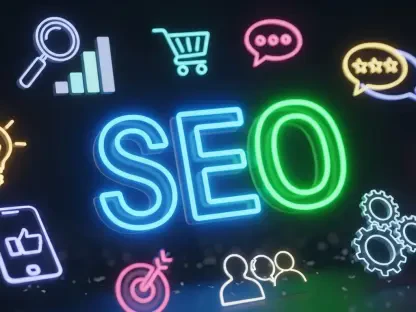Vertical AI has emerged as a game-changer in the digital marketing landscape, reshaping how brands connect with consumers in an increasingly complex digital ecosystem, and in 2025, the industry stands at a critical juncture where artificial intelligence is no longer just a buzzword but a fundamental driver of strategy and execution. A staggering statistic underscores this shift: industry reports indicate that over 60% of marketing campaigns now leverage some form of AI, with vertical AI agents leading the charge in delivering precision and personalization. This specialized technology, tailored to specific industries, is redefining efficiency and engagement, prompting brands to rethink traditional approaches. What sets vertical AI apart, and how is it steering digital marketing toward unprecedented innovation? This report dives deep into the current state, trends, challenges, and future trajectory of this transformative force.
Understanding Vertical AI and Its Role in Digital Marketing
Vertical AI agents represent a new breed of artificial intelligence systems, meticulously designed to cater to specific industries or operational functions, unlike their general-purpose counterparts. These agents excel in understanding nuanced sector-specific data, enabling them to provide insights and solutions that are far more relevant than broad-spectrum AI tools. In digital marketing, their capacity to analyze contextual signals—such as user behavior, location, and sentiment—positions them as indispensable assets for crafting targeted campaigns that resonate deeply with audiences.
The significance of vertical AI in marketing lies in its ability to drive hyper-targeted insights, automate complex processes, and deliver personalization at scale. By interpreting industry-specific trends and consumer preferences, these agents empower brands to create messaging that feels uniquely tailored, enhancing engagement and conversion rates. For instance, a vertical AI system in e-commerce can optimize product recommendations by aligning them with real-time user activity, while in finance, it ensures compliance with regulatory nuances during campaign execution.
Digital marketing today is a dynamic arena, dominated by key players like Google, Meta, and emerging tech firms that are rapidly integrating AI-driven solutions into their platforms. The industry has seen widespread adoption of automation tools, data analytics, and machine learning, with vertical AI gaining traction as a specialized layer that adds depth to these technologies. As consumer expectations for seamless, relevant experiences grow, the shift toward AI-centric strategies is no longer optional but essential for staying competitive in a saturated market.
Current Trends and Market Dynamics of Vertical AI in Marketing
Key Trends Shaping the Industry
A defining trend in 2025 is the increasing specialization of vertical AI in contextual intelligence, which allows brands to interpret subtle consumer cues with remarkable accuracy. This capability enables the creation of ad content and placements that align perfectly with a user’s immediate environment or mindset, boosting relevance. Automation of marketing tasks, from content generation to media planning, is another dominant force, reducing manual workloads and allowing teams to focus on strategic innovation.
Consumer behavior continues to evolve, with a clear demand for personalized experiences driving the adoption of vertical AI solutions. Modern audiences expect brands to anticipate their needs and deliver messaging that feels bespoke, a challenge that these agents meet by leveraging vast datasets to predict preferences. Whether it’s tailoring email campaigns or optimizing social media ads, vertical AI ensures that interactions are meaningful, fostering loyalty in an era of fleeting attention spans.
Real-world applications of vertical AI span diverse sectors, each benefiting from tailored approaches. In e-commerce, agents streamline content production for product launches, while in healthcare, they navigate regulatory constraints to deliver compliant yet compelling messaging. Financial services utilize vertical AI to adjust campaigns based on economic indicators, demonstrating how industry-specific customization translates into tangible results like improved return on investment.
Market Growth and Projections
The market for vertical AI in marketing is experiencing robust growth, with industry analysts projecting significant expansion over the next few years. Reports from leading sources like Gartner highlight that investments in specialized AI tools have surged by over 30% since last year, signaling strong confidence in their potential. Experts anticipate that by 2028, a substantial portion of marketing interactions will be autonomously managed by such agents, marking a shift toward predictive rather than reactive strategies.
Forward-looking data suggests that early adopters of vertical AI are gaining a distinct competitive edge, particularly in saturated markets where differentiation is critical. Projections indicate a compound annual growth rate of over 25% for vertical AI solutions in marketing from 2025 to 2027, driven by advancements in machine learning and data processing. This growth underscores the technology’s role as a cornerstone of modern marketing frameworks, with scalability and adaptability at its core.
The market potential remains vast, as more brands recognize the value of integrating vertical AI into their operations. Companies that prioritize these tools now are likely to dominate their niches, leveraging enhanced efficiency and consumer insights to outpace competitors. As adoption accelerates, the focus is shifting toward seamless integration with existing systems, ensuring that innovation translates into measurable outcomes.
Challenges in Implementing Vertical AI for Marketing
Implementing vertical AI in marketing is not without hurdles, with data privacy emerging as a primary concern in 2025. The reliance on extensive personal data to fuel hyper-targeted campaigns raises risks of invasive advertising practices that could erode consumer trust. Brands must navigate a fine line between personalization and intrusion, ensuring that data usage remains transparent and consensual.
Technological challenges also pose significant barriers, particularly in integrating vertical AI into legacy workflows and platforms. Many organizations struggle with compatibility issues, requiring substantial investments in infrastructure upgrades to accommodate these advanced systems. Additionally, the complexity of training AI agents to align with specific brand voices and objectives can delay deployment and impact short-term results.
To address these obstacles, solutions such as robust ethical guidelines and enhanced transparency measures are critical. Developing frameworks that prioritize consumer consent and data security can mitigate privacy concerns, while modular AI designs can ease integration challenges. Collaboration between tech providers and marketing teams is essential to tailor solutions that balance innovation with practicality, ensuring sustainable implementation across diverse business environments.
Regulatory and Ethical Considerations for Vertical AI
The regulatory landscape surrounding vertical AI in marketing is becoming increasingly stringent, with data protection laws shaping how brands deploy these technologies. Compliance with global standards like GDPR and regional mandates requires meticulous attention to data handling practices, placing additional responsibility on companies to safeguard consumer information. Non-compliance can result in severe penalties, making regulatory adherence a top priority.
Ethical considerations are equally vital, as the potential for misuse of consumer data looms large. Vertical AI must operate within frameworks that prevent exploitation and ensure responsible application, such as avoiding manipulative advertising tactics. Building consumer trust hinges on demonstrating accountability, with brands needing to communicate clearly how data is used to enhance user experiences without compromising privacy.
Balancing innovation with accountability remains a key challenge, as regulations evolve to keep pace with technological advancements. Policymakers and industry leaders must collaborate to establish guidelines that foster growth while protecting consumer rights. This dynamic interplay will likely influence the trajectory of vertical AI adoption, ensuring that ethical practices are embedded in marketing strategies moving forward.
The Future of Vertical AI in Digital Marketing
Looking ahead, vertical AI is poised to achieve greater autonomy, seamlessly integrating with cutting-edge technologies like augmented reality to create immersive brand experiences. These advancements will enable marketers to craft campaigns that transcend traditional formats, engaging consumers in interactive and memorable ways. The focus on experiential marketing is expected to redefine how brands build connections in competitive spaces.
Potential disruptors, such as shifting consumer preferences and global economic fluctuations, will continue to impact marketing strategies. Vertical AI’s ability to adapt dynamically to these changes—whether through real-time trend analysis or predictive modeling—will be crucial for maintaining relevance. Brands must remain agile, leveraging AI insights to pivot swiftly in response to external pressures or emerging opportunities.
Growth areas like predictive marketing and context engineering are set to dominate the landscape, offering avenues for sustained competitive advantage. Predictive capabilities will allow brands to anticipate consumer needs before they arise, while context engineering ensures that messaging aligns with the user’s immediate environment. Innovation in these domains will drive the next wave of transformation, positioning vertical AI as a cornerstone of strategic planning.
Conclusion and Strategic Recommendations
Reflecting on the insights gathered, it is evident that vertical AI has carved a transformative path in digital marketing, redefining precision, efficiency, and personalization. The technology has proven its capacity to revolutionize how brands engage with audiences, turning data into meaningful dialogue. Challenges around privacy and integration have surfaced as critical considerations, yet the industry has shown resilience in addressing these through ethical frameworks and technological innovation.
Moving forward, brands should prioritize early and strategic adoption of vertical AI to capitalize on its potential for long-term success. Investing in scalable solutions that integrate seamlessly with existing systems is a recommended step, as is a commitment to transparency to uphold consumer trust. Collaborating with regulators and tech providers to shape responsible practices will further ensure that innovation does not come at the expense of accountability.
As the digital landscape continues to evolve, exploring partnerships with AI specialists to co-create tailored solutions could unlock new growth avenues. Brands that embrace a proactive stance—balancing cutting-edge tools with a consumer-centric ethos—stand to thrive in an ever-shifting market. The journey ahead demands vigilance and adaptability, but the rewards of mastering vertical AI promise to reshape marketing’s future in profound ways.









